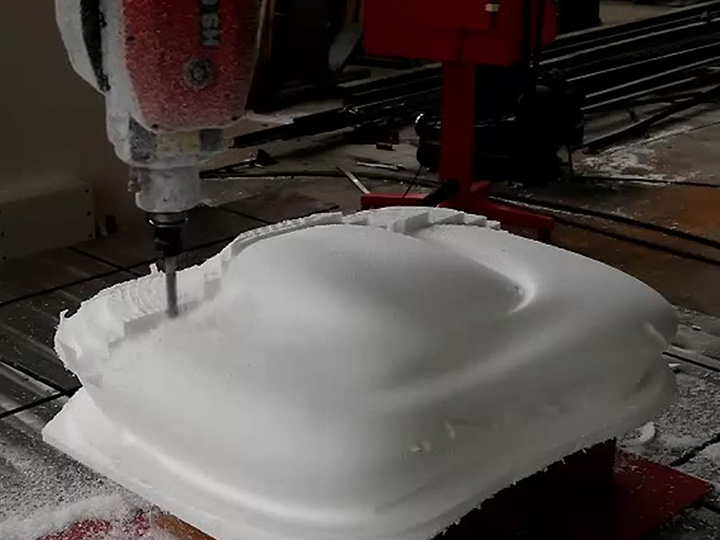The Foam Milling System for 3D sculpting represents a cutting-edge technology that revolutionizes the creation of intricate three-dimensional forms from foam materials. Widely embraced across diverse industries such as manufacturing, prototyping, art and design, and aerospace, this innovative system harnesses the power of Computer Numerical Control (CNC) technology. Through precise control and automation, the foam milling system enables artisans, engineers, and designers to intricately shape and carve foam blocks with exceptional accuracy. This versatility positions it as an indispensable solution for those seeking to realize detailed and complex sculptures with efficiency and precision.

Use of Foam milling system for 3D sculpting:
The use of a Foam Milling System for 3D sculpting is a transformative process that finds applications across various industries, offering unique advantages for precision, versatility, and efficiency.
Here are some key applications and benefits of utilizing a Foam Milling System:
1.Prototyping in Product Design: Rapid Prototyping: Accelerate product development cycles with quick transformation of digital designs into physical prototypes.
2. Artistic Sculptures and Installations: Intricate Artwork: Enable artists to bring digital designs to life with precision, exploring complex forms and textures.
3. Architectural Models: Detailed Representations: Widely adopted in architecture for creating accurate and detailed models showcasing intricate design elements.
4. Set Design and Prop Fabrication: Film and Entertainment: Crucial role in crafting realistic and lightweight set designs, props, and scenic elements for visually captivating environments.
5. Aerospace Prototyping: Complex Components: Ideal for prototyping intricate aerospace components with its ability to handle complex geometries.
6.Educational Demonstrations: Teaching Tool: Valuable educational tool for demonstrating 3D design and manufacturing concepts in institutions.
7. Custom Signage and Branding: Customized Branding: Businesses utilize foam milling for creating precise custom signage, branding elements, and visually appealing displays.
8. Themed Environments: Theme Parks and Exhibitions: Employed in creating lifelike and detailed themed environments, enhancing the immersive experience for visitors.
9. Architectural Sculpture: Exterior Building Elements: Utilized by architectural sculptors for crafting visually striking and intricate exterior building elements.
Key Benefits of Foam Milling:
Precision: CNC-driven precision ensures accurate reproduction of intricate designs.
Efficiency: Automated workflows reduce manual labor, increasing overall production efficiency.
Versatility: Compatible with various foam materials, enabling the creation of diverse forms and structures.
Cost-Effective Prototyping: Rapid prototyping capabilities contribute to cost-effective design iterations.
Conclusion:
The use of a Foam Milling System for 3D sculpting spans a wide range of industries, offering a versatile and efficient solution for creating intricate and detailed forms from foam materials. Whether in the realm of art, design, manufacturing, or prototyping, this technology plays a pivotal role in bringing digital designs to life with precision and efficiency.
